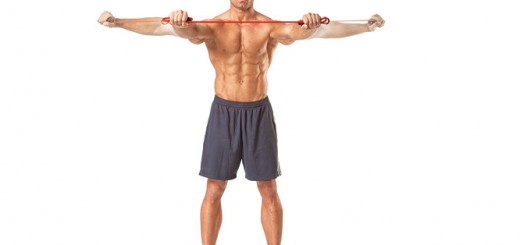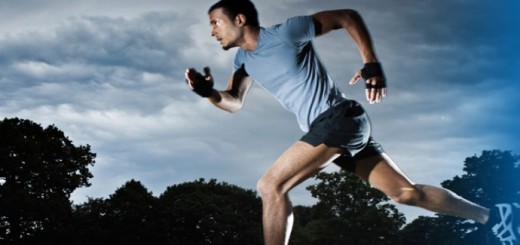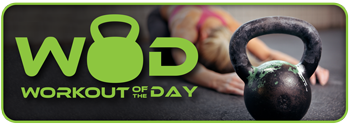Crossfit, Active Release Technique & Neurokinetic Therapy
The more you exercise, the more you require rehab in order to make that next set of gains – plain and simple. Top-tier athletes have a health care team standing behind them; helping them each step along the way – so where’s yours?
This article highlights ART and NKT fo rehabbing those pain-in-the-ass areas.
UNDERSTANDING THE HEALING MODALITIES OF ART AND NKT
Over the past three years of immersing myself in CrossFit, strength training, Olympic lifting, yoga, and mobility work, I have become increasingly interested in a variety of ways to heal our body. We put physical stress on our bodies everyday, whether that is through a strenuous workout routine or a sedentary lifestyle. What comes to mind for the majority of active individuals to enhance their body’s ability to heal faster is either deep tissue massages or chiropractic adjustments. While these are amazing techniques to use, there are many other modalities to explore, and my injuries over the past few years encouraged me to look at other ways to heal my mind-body connection.
 The two types of therapy I discovered to be most impactful are active release technique (ART) and neurokinetic therapy (NKT). These therapies have helped me recover from the chronic pain I experienced in my sciatic nerve and the levator scapulae muscle. The sciatic nerve is the largest nerve in the human body. It is located in the lower back and runs through your buttock, down the back of your leg, to the bottom of your foot. The levator scapulae muscle is located in the back of your neck and is attached to your spine. Its main function is to elevate and rotate the scapula.
The two types of therapy I discovered to be most impactful are active release technique (ART) and neurokinetic therapy (NKT). These therapies have helped me recover from the chronic pain I experienced in my sciatic nerve and the levator scapulae muscle. The sciatic nerve is the largest nerve in the human body. It is located in the lower back and runs through your buttock, down the back of your leg, to the bottom of your foot. The levator scapulae muscle is located in the back of your neck and is attached to your spine. Its main function is to elevate and rotate the scapula.
I’m going to explain both ART and NKT healing forms so you can discover if they are something that you could benefit from as well.
Active Release Technique
ART was developed, refined, and patented by P. Michael Leahy, DC, CCSP. It is a soft tissue system and movement-based massage technique that treats problems with muscles, tendons, ligaments, fascia, and nerves. ART works by treating the underlying cause of the injury, using a combination of pressure, tension, and motion to reduce scar tissue buildup, which is often the source of the pain or condition. The practitioner uses his or her hands to separate and stretch out areas where scar tissue has accumulated. The release that comes as a result increases your range of motion, flexibility, and strength.
ART often includes movements where the patient is asked to move a specific body part while pressure is applied. The importance of active motion during your session is to help stimulate neurological pathways in the spinal cord and to identify your problem spots. The effects of ART can be felt within one session, especially when pressure is taken off a nerve.
Many ART clients compare a session with a hard workout, exclaiming, “It hurts so good!” I can definitely relate to this statement. I became very close with my ART practitioner when I was healing from sciatica nerve damage in 2011 and often was in discomfort during parts of the session. This is totally a justifiable sensation, as it is a good indication that the problem has been identified.
In my experience, I feel that ART is beneficial to relieve tissue damage caused by unwanted pressure on the nerves and for short-term relief during competitions, races. or other athletic endeavors. This video is from the founder and explains a bit more about ART:
Neurokinetic Therapy
David Weinstock developed NKT in 1985. He co-founded the Institute of Conscious Bodywork in Marin County, California, and NKT was developed in collaboration with several of his peers. NKT addresses the cause of pain: dysfunctional coordination and movement patterns stored in the cerebellum. It treats the cause of the problem and not just the symptom.
An NKT practitioner will release the over-contracted muscles that are holding the compensation patterns together, and activate the correct patterns with the attention of an alerted cerebellum. This will then enable the brain to rid itself of dysfunctional compensation patterns and return movement to natural function. It is a combination of deep tissue massage and muscle testing. During the process of massage, one is able to fire the nerves and open up a pathway to receive new information from the brain. There is then about a thirty to sixty second window where your brain will receive this new information.
The effects of NKT are felt after one session but it is best to receive three to five sessions consistently for your cerebellum to recognize the safety of the new patterns being implemented. After my first NKT session, my low-level headache I had for over two months was completely gone, but the tightness and chronic pain in my neck still persisted. I continued to follow the instructions of my practitioner to do the various stretches everyday.
After seeing him for six weeks, he declared that my cerebellum was quickly taking in the new information. I was on the road to recovery and a new understanding and appreciation for the messages our brain sends to our whole body. NKT is very helpful when it comes to chronic pain because it works at the root cause – the messages the cerebellum is sending to your muscles and nerves – and brings you to a healthier level of being.
Here is a video explanation of NRT from its founder, David Weinstock:
My experience of suffering from chronic pain has been a great teacher over the past few years. I have been able to cultivate empathy for those who deal with pain on a daily basis. That pain might come from an autoimmune disease response, nerve damage, sickness, disabilities, or injuries. My experience has also taught me to slow down in life. During the times when I could not do strength training or CrossFit, I found other ways to release my energy. I incorporated yoga and meditation into my daily routine and discovered my love for hiking and tracking. Essentially, my pain forced me to shift my perspective on what physical fitness was to me. Once I accepted these challenges would strengthen me at my very core and to breathe in that awareness, I really started the healing process and let go of the pain.
I highly suggest these two forms of bodywork if you are someone who has experience chronic pain in your life. Along with enhancing your performance through physical exercise, it is also crucial to nourish it through diet, supplements, mobility, relaxation, play and bodywork. My experience is that there is no one healing modality that is perfect.Where ART helped me overcome my sciatic nerve injury, I then reached out to NKT to help correct the neck and shoulder pain I had developed. Therefore, I encourage you to explore and try out some other healing modalities to see what works best for you body in this exact moment of your life. I promise, your body (and mind) will thank you.
Original Article by: Heidi L. George at breakingmuscle.com





